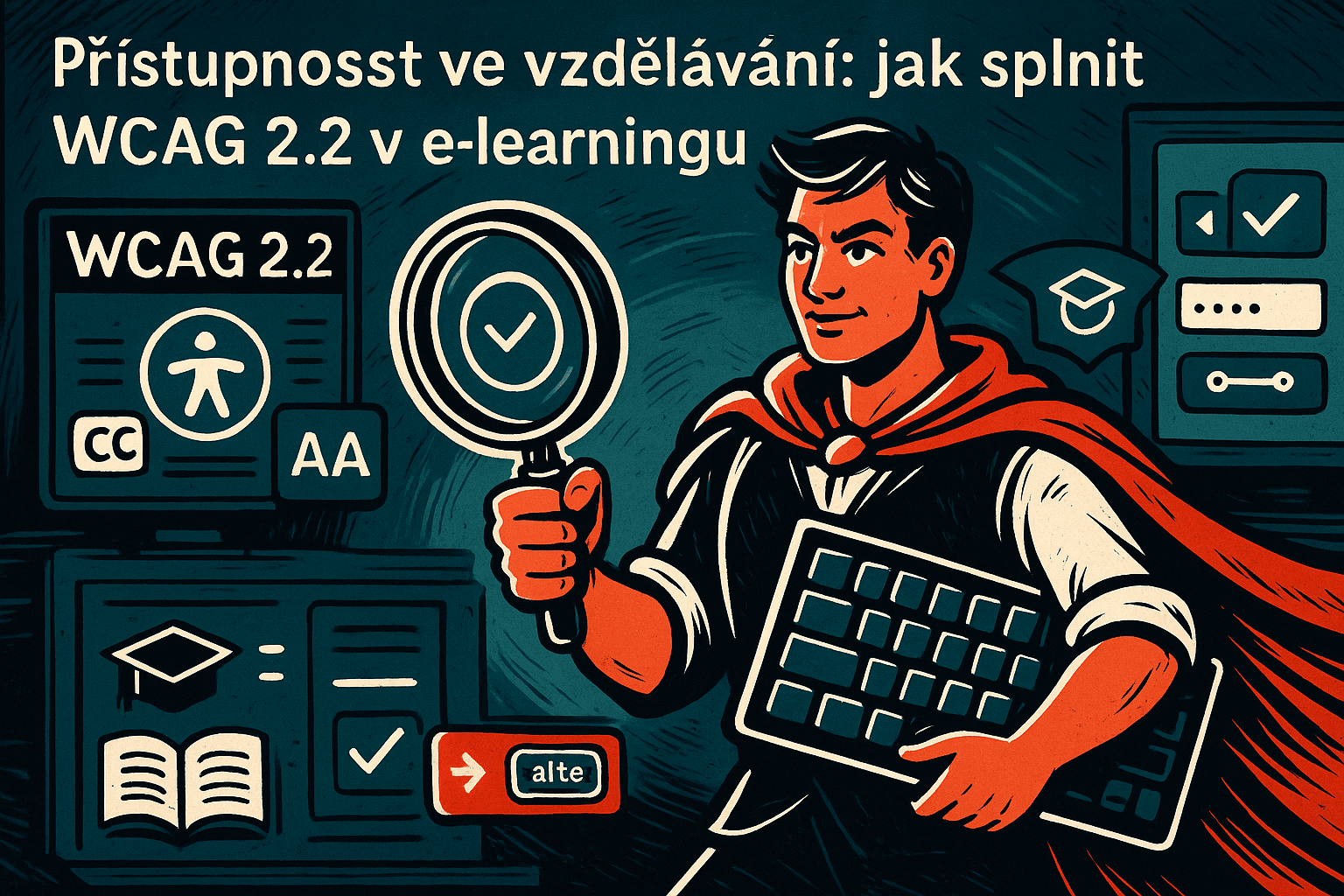Open architecture and LMS extensibility: why it is important and how to use it
(or how not to lose flexibility when learning needs start to change)
When companies deploy a new LMS (Learning Management System), they often focus mainly on the features they need "right now". But what happens in a year or two? Learning strategies may shift, new technologies will emerge (e.g. xAPI, AI recommendation), HR systems will change. And it's times like these that you'll appreciate that your LMS has an open architecture and extensibility. Without it, you can easily find yourself in a situation where you have to either replace the system entirely or laboriously work around its limitations. In this article, we'll show why open architecture is so important and how to use it effectively in your business.
What does "open architecture" actually mean in an LMS
Simply put, it's about the LMS offering a sufficiently open interface (APIs, plugins, modules, integration points) to allow:
- Add new features: For example, a module for gamification, adaptive testing or LRS (Learning Record Store).
- Connect with other systems: HR or payroll systems, CRM, video conferencing tools (Zoom, Teams), analytics tools.
- Customize existing functionality: Have the ability to add custom branding, enhanced reporting, change the course approval process.
If the architecture is closed, then any changes are made only by the vendor (at a price, terms and conditions set by them). Openness means a freer hand and often greater longevity of the system.
Why you should care
- Scaling: You may only need a course for 50 employees now, but what if you grow to 500 or more within a year? You'll want to incorporate advanced features like AI-powered tests or personalized course recommendations. In a closed system, you can easily run into limits.
- Customizing to your needs: Every company has a slightly different training process. One needs extremely detailed reporting, another needs complex approvals before course assignment, another requires integration with external e-learning portals. The open architecture allows you to add what is not in the default suite.
- Integration with the ecosystem: Systems like HRIS (Human Resources Information System), CRM, BI tools or MS Teams play a vital role in companies. LMS should not stand aside, but collaborate - synchronize users and data, give managers reports on team performance, offer single sign-on (SSO). The more open the LMS, the easier the integration.
- Longer lifecycle: When an LMS is adaptable, you don't have to completely change it when there's a major change in learning processes. Just add a plugin, extension or use the API. This saves you the money and time associated with switching to a completely new platform.
How to tell if an LMS is truly extensible
- API documentation: Does the vendor have publicly available and understandable API documentation? Does it allow CRUD (Create, Read, Update, Delete) operations over courses, users, tests, reporting?
- Plugins and marketplace: Is there an official or community marketplace where developers offer extensions? Alternatively, does the vendor at least have a modular structure where custom plugins can be written?
- Integration: What integrations does the LMS offer "out of the box"? The more there are, the more likely the architecture will be open (e.g., integration with MS Teams, Zoom, Slack, SAP, xAPI/LRS, etc.).
- Customizability of UI: Can you customize the look (branding, colors) and structure of the courses, or is everything strictly fixed?
Examples of using open architecture in practice
- Integration with the HR system: When a new employee registers in HRIS, an account is automatically created in the LMS with the relevant onboarding courses.
- Connection to LRS: The company wants to collect detailed learning data (xAPI) and evaluate it in an analytics tool. Open LMSs will allow integration with the Learning Record Store, while closed ones will not.
- Custom reports and dashboards: If the company has few predefined reports, an open LMS offers an API from which a BI tool (e.g., Power BI, Tableau) pulls data and assembles reports as needed.
- Microservices: Some organizations want to split the LMS into microservices - e.g., separate user management, separate course management, separate test management. The open architecture makes this easy.
How to use open architecture in your company
- Start with needs: Consider whether you plan to implement xAPI, AI recommendation or deeper reporting, for example, soon. If so, be clear about this up front so that you choose an LMS that will allow this without any problems.
- Communicate with the vendor: Ask for specific use cases and references. Does the vendor have experience integrating with SAP, Helios or any of your other systems?
- Pilot Project: Test how the LMS behaves in a specific integration. Sometimes it pretends to be open, but the API is read-only or lacks real documentation.
- Consider custom development: If you have a strong IT team, you can write some plugins or integrations yourself. An open architecture will make this much easier.
Think about the future
Open architecture and extensibility may not be a priority for very small projects where basic functionality is enough. But once you grow or start wanting something special (like incorporating AI or LRS), you'll be extremely grateful for that flexibility. So investing in a more open LMS solution makes sense, even if you don't currently use all the advanced features - the key is that you have room to grow and change.
If you're looking for an LMS with an open architecture, check out our platform comparison. There, we address the issue of APIs, plugin options or integrations, and you'll learn which systems are furthest along in this regard. This will prevent a situation where you find out after a year that your learning strategy has evolved elsewhere, and a closed LMS hasn't kept up. After all, openness is an insurance policy in e-learning that you won't be bound by technological limits and can innovate to your exact needs.







